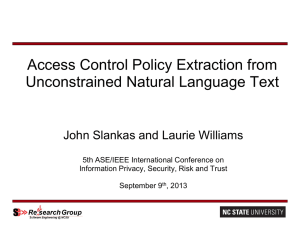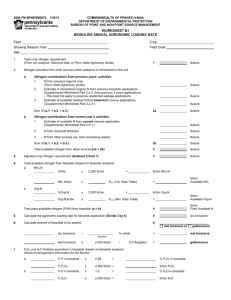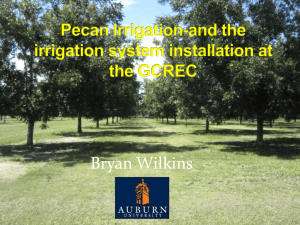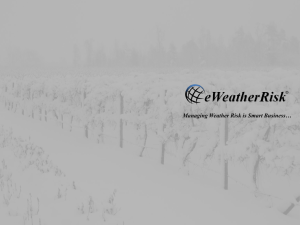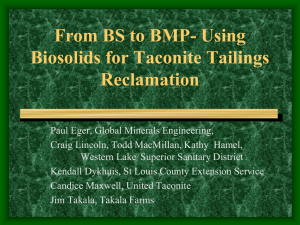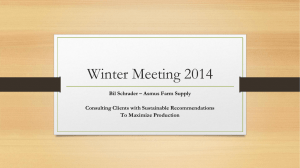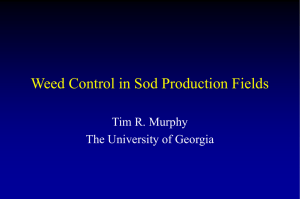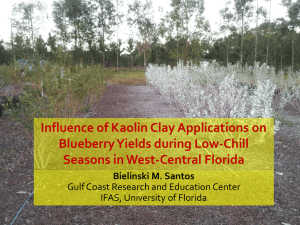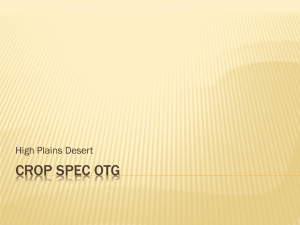Corn Stover and Perennial Grasses For Biofuel
advertisement
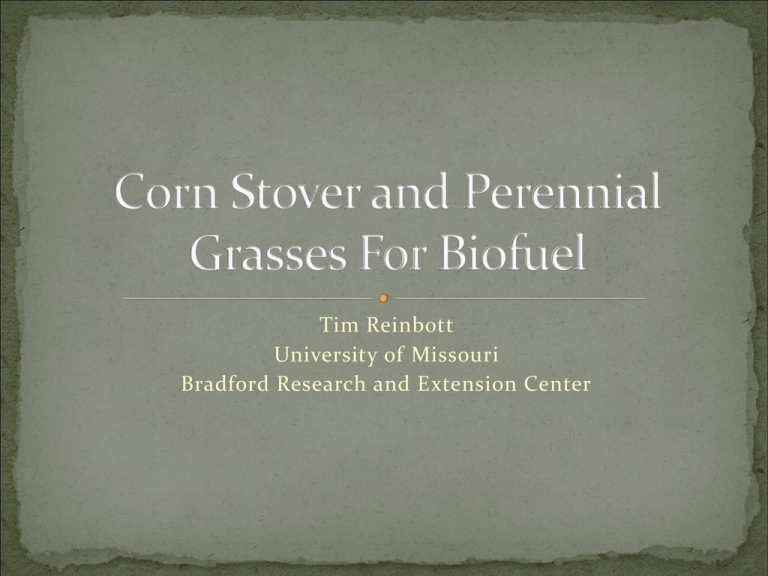
Tim Reinbott University of Missouri Bradford Research and Extension Center Plentiful 12 Billion Bushel Crop, nearly 1 billion carryover Compact 45 lbs/ft2 Consistent Minnesota to Missouri is the Same Infrastructure in Place On Farm Storage Often Called Trash: But it Protects From and Provides Wind Erosion Water Erosion Soil Carbon-Organic Matter No Food or Fuel Debate? Is this always true? Does Corn Residue Have An Economic Value? Harvest Index Corn-50% Soybean-40% Wheat-40% N, P, and K/ton 19-4-36 Tons/acre 120 bu/acre : 120 x 56=6720 lbs x 0.67=4500 lbs or 2.25 tons/acre • 2.25 tons/acre x 4 lbs P205/ton=9 lbs P2O5/acre • 2.25 tons/acre x 36 lbs K20/ton=81 lbs K20/acre • 9 x $0.78/lb P205=$7.02 • 81 x $0.78/lb K20=$63.18 • $70.2/acre or $31.2/ton Used in Power Plants or Ethanol-Poet in South Dakota 15% of Residue= 1000 lbs/acre Nutrient Removal 1 lb P2O5 and 8 lb K2O/acre-$7.5 Specialized Equipment • Harvest Index =Grain Yield/total above ground yield Grain~52% and Stover ~48% • Fertilizer Cost of Residue-P and K=$70/acre • Cost of Raking and Baling- $12/bale • Total Cost=$150/acre or $51/ton Soil Carbon or Organic Matter In Missouri-~2% We have lost 50% from tillage Can we maintain what we have left and still remove the crop residue? Soil Structure Erosion Control Soil Tilth Aeration Water Holding Capacity Nutrient Cycling Ion Exchange Microbial Activity After 8 years a drop in Soil Organic Matter when even 50% of Residue is removed. Percent Organic Matter Percent Soil Organic Matter-8 years Continuous Corn 2.8 2.7 2.6 2.5 2.4 2.3 0 50 100 150 Amount of Previous Crop Residue A 120 bu/acre corn crop produces 6720 lbs of Corn Stover. Which is minimal to maintain Soil Organic Matter. Amount of Cover to Maintain or Limit 12000 Soil Organic Matter Water Erosion lbs/acre 10000 8000 Wind Erosion 6000 4000 2000 0 Plow Notill Continuous Corn Plow Notill Corn Soybean Rotation Corn Residue has economic value-$70/acre Baling another $12/bale or $45/acre. Residue in Missouri Extremely Important for Maintaining Soil Organic Matter and Reducing Erosion Corn Cobs-OK, just make sure you get something for them. Primary Forage in Missouri-17 million acres Cool Season Grass Most Growth in Spring and Fall Stockpiling After Fescue Seed Harvest Fescue Seed Harvest As a Forage-$20/bale As Biofuel-$35/bale Pelletizing Ethanol Nutrient Costs? Tall Fescue Hay 40-15-40/ton removed P and K @ $0.78/lb = $42.9/ton Decent Quality Hay in Spring if Put Up Timely Often more than needed High Quality Grazing in Fall Aftermath of Seed Harvest-Poor Quality Planting-Seed of Switchgrass is very easy compared to Indian or Big Bluestem Indian and Big Bluestem must be deawned if you do not have specialized equipment Standard Seed Metering Fluffy Seed Attachment Switchgrass is a Early Successional Species Will die out in 10-15 years Other NWSG persist longer Switchgrass Has A lot of Ecotypes Developed Upland-Cave In Rock Lowland-Alamo, Kanlow Mow, Rake, Bale When Beginning in October when dormant Can be delayed to allow more nutrients to move down to the root system In NE Missouri in 2008 at the Plant Materials Center with 100 lbs N/acre CIR Switchgrass-4.97 tons/acre Big Bluestem-5.6 tons/acre Rumsey Indiangrass-6.6 tons/acre Kanlow and Alamo SG7.9 tons/acre Our Plots without any N: Switchgrass-1.94 ton/acre Indian-2.14 ton/acre Big Bluestem-1.11 ton/acre Switchgrass Indiangrass When it is icy many of the grasses can be broken down Big Bluestem Big Bluestem (left) compared to Indiangrass (right). 5 tons/acre 100 lb N/acre-$80/acre Remove: P-9 lb/ton x 5 tons=45 lbs/acre K-46 lb/ton x 5 tons=230 lbs/acre* At $0.78/ lb P and K=$35+$179=$214+$80=$294/acre * this can go down if harvest is delayed until winter $294/acre/5 tons Or $58.8/ton 1200 lb Big Round Bale=$35 Cost of Baling-$20/bale Total Cost-$55/bale Does not include transport, time, etc. As much below ground dry matter as above Very Deep-6 ft Not going to be a problem 50 million Gallon Ethanol Plant 90 gallon/ton conversion 550,000 tons or 925,000 big Round Bales At 5 tons/acre 111,000 acres within a 40 mile radius of the ethanol plant Enough to Fill Faurot Stadium 5 times An Answer Maybe In Field Pelletizing or Compression to a More Compact Form Tall Fescue Aftermath From Seed Harvest Maybe the Best Source of Biofuel Big Blustem and Indiangrass harder to establish than Switchgrass but will live longer and give similar if not greater yields Cost of fertilizer replacement is nearly $60/bale Concerns with year around storage Corn-1/3 Ethanol, 1/3 Distillers Grain, 1/3 CO2 Cellulosic Ethanol or Pelleting-100% Fuel No animal feed A monoculture of a grass will be essentially a desert for wildlife Cost is driven up by N fertilizer What if we had a mixed stand? Minnesota Study Published in Science Found More Biomass and Biofuel Potential When As The Diversity Increased Use of Natives? Use of Native Legumes for a N source Also Provide Flexibility for Livestock At MU Bradford Research and Extension Center Low Input/High Diverse compared to a High Input/Monoculture 18 different forbs and legumes Switchgrass and Big Bluestem Cutting Height Seasonal Harvests Depending on Need
